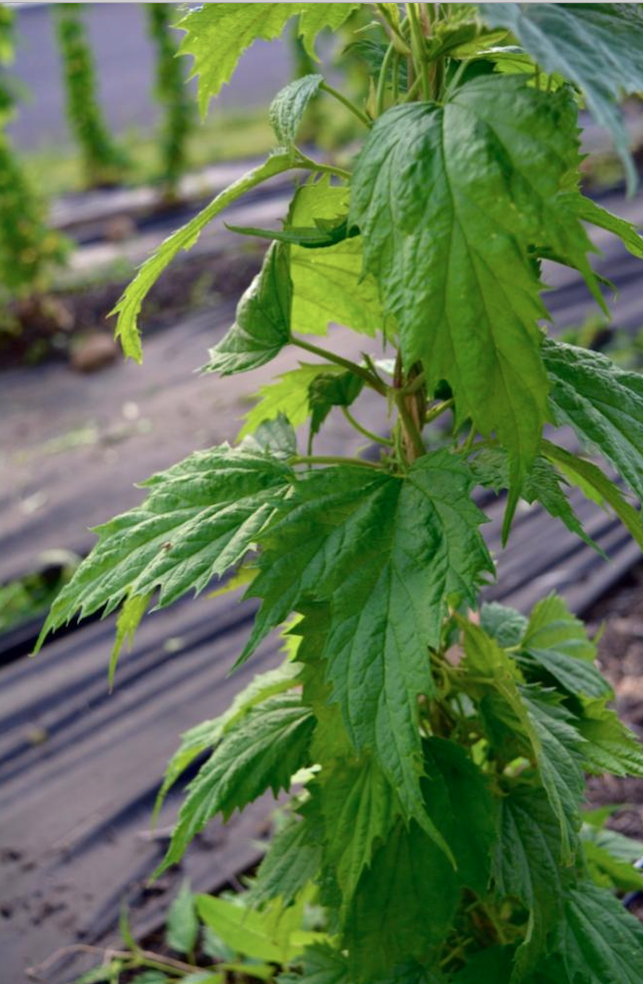The point is that if you will never be homozygous for sex chromosomes, as you need the parents to have different "alleles" of the sex chromosomes - or at least of the sex-determining region. So I guess you could wait until you were homozygous for every other gene and then kill all the males, but that's the end of sex in that line. Assuming you haven't got problems with homozygous recessives killing you long before that. And of course hops are unusual in that the crop is sex-linked.
Of course, this is all moot - hops are a long way from homozygous, many of the common commercial lines are only 2-5 generations away from landraces - Citra is a great-granddaughter of Fuggle for instance. By the standards of most crops, that's absolutely nothing.
Well, sure, you'll never be homozygous for sex. Unless...
I have read of an article that uses chemical treatment to initiate fertile off-sex flowers, allowing self-pollination. I think it was to initiate fertile male flowers on females, but could be the other way around, I don't recall.
Ah, yes,
here it is:
https://patents.google.com/patent/US20140196164A1/en
And of course, one could also bypass a lot of the inbreeding by developping a proper double haploid.
But practically-speaking, just about anyone could take a male and a female, harvest the seeds, destroy the previous generation, culture the seeds until flowering, pre-emptively destroying all but the most promising male, then harvesting the seeds from the most promising female, destroying that generation, sowing those seeds, etc. Without any fancy tech or chemicals, after say ten generations of randomly doing this, your offspring will be fairly homozygous. Won't be 100% homozygous, but neither are your typical "true breeding" ancestral vegetable variety. Using the same protocol, but with guided selection (instead of just taking the "most fit" of each sex in a cross, you carefully look at the traits, especially the recessive ones, to actively retain the plants that express the most homozygosity), you can achieve similar results even faster. In this regard, the speed at which you will increase homozygosity is, in ascending order, by selection of the fittest (might favor heterozygosity), utterly random selection (picking 1 male and 1 female of each cross without regards to any traits such as fitness), and phenotypic selection (picking 1 male and 1 female that are most alike and displaying most homozygosity on known genes).
Citra, speaking of the devil, is also an inbred grand-daughter of 'Hallertauer milltlefrueh''s self-crossed offspring. Both Citra's father and mother were issued from the exact same cross:
https://patents.google.com/patent/USPP21289P3/en
And since we are on that tangeant, many other cultivars have a similar inbred pedigree. Now, I still reckon that even these crosses have a high level of heterozygosity, though. Hops are said to be quite prone to inbreeding depression. Doesn't mean it's impossible to breed true-to-seed varieties, just means that it makes no economic sense to put all the work required to achieve it. Whose gonna invest decades to develop a hop that breeds true to seed and that anyone can then rip off, to sell cheap seeds to growers that won't see any yields for years?
The only interest to sexual reproduction is the creation of novel genotypes. Otherwise, vegetative reproduction is much, much more advantageous on all levels, barring only importation regulations and fees.







